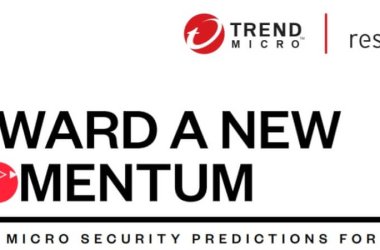Dubai, UAE, April 13, 2021: McAfee Corp., the device-to-cloud cybersecurity company, today released its McAfee Threats Report: April 2021, examining cybercriminal activity related to malware and the evolution of cyber threats in the third and fourth quarters of 2020. In Q4, McAfee Labs observed an average of 648 threats per minute, an increase of 60 threats per minute (10%) over Q3. The two quarters also saw COVID-19 related cyber-attack detections increase by 240% in Q3 and 114% in Q4, while Powershell threats again surged 208% due to continued increases in Donoff malware activity.

“The world—and enterprises—adjusted amidst pandemic restrictions and sustained remote work challenges, while security threats continued to evolve in complexity and increase in volume”, said Raj Samani, McAfee fellow and chief scientist. “Though a large percentage of employees grew more proficient and productive in working remotely, enterprises endured more opportunistic COVID-19 related campaigns among a new cast of bad-actor schemes. Furthermore, ransomware and malware targeting vulnerabilities in work-related apps and processes were active and remain dangerous threats capable of taking over networks and data, while costing millions in assets and recovery costs”.
Each quarter, McAfee assesses the state of the cyber threat landscape based on in-depth research, investigative analysis, and threat data gathered by the McAfee Global Threat Intelligence cloud from over a billion sensors across multiple threat vectors around the world. The introduction of MVISION Insights in 2020 has made it possible for McAfee to track the prevalence of campaigns, their associated IoCs, and determine the in-field detections. This month’s report is the first to feature statistics such as the top MITRE ATT&CK techniques observed in Q4 among criminal and APT groups, while sharing observations on the SUNBURST malware that rocked the cybersecurity world at the end of 2020.
COVID-19 Themed Threats
As organisations the world over adapted to unprecedented numbers of employees working from home, cybercriminals worked feverishly to launch COVID-19 themed attacks on a workforce coping with pandemic restrictions and the potential vulnerabilities of remote device and bandwidth security. As the pandemic began to surge around the world, McAfee saw a 605% increase in Q2 2020. These attacks again increased by 240% in Q3 and 114% in Q4.
Malware Threats
In Q3 2020, McAfee Labs observed an average of 588 threats per minute, an increase of 169 threats per minute (40%). By the fourth quarter, this average rose to 648 threats per minute, an increase of 60 threats per minute (10%).
- Powershell threats grew 208% in Q4 driven largely by Donoff malware. McAfee observed numerous Powershell attacks utilising Process Injection to insert code into legitimate running processes as a privilege escalation technique.
- Mobile malware grew 118% in Q4 in part due to a surge in SMS Reg samples. The HiddenAds, Clicker, MoqHao, HiddenApp, Dropper and FakeApp strains were the most detected mobile malware families.
- Ransomware grew in volume 69% from Q3 to Q4 driven by Cryptodefense. REvil, Thanos, Ryuk, RansomeXX and Maze groups topped the overall list of ransomware families.
- MacOS malware exploded in Q3 420% due to EvilQuest ransomware but then slowed towards the end of the year.
Victims, Vectors & Vulnerabilities
Publicly Reported Incidents. McAfee tracked a 100% increase in publicly reported cyber incidents targeting the technology sector during the fourth quarter of 2020. Reported incidents in the public sector grew by 93% over the same period.
Attack Vectors. Malware was the most reported cause of security incidents in Q4 followed by account hijackings, targeted attacks and vulnerabilities. Incidents related to new vulnerabilities surged 100% in Q4, malware and targeted attacks each rose 43%, and account hijackings increased 30%.
Vulnerabilities Exploited. Among the campaigns McAfee monitored and investigated, the Eternal Blue exploit was the most prominent in Q4 2020.
MITRE ATT&CK Techniques
The top MITRE ATT&CK techniques observed by McAfee in Q3 and Q4 included System Information Discovery, Obfuscated Files or Information, File and Directory Discovery, Data Encryption for Impact, Stop Services, Process Injection, Process Discovery, Masquerading Techniques, and Exploits of Public Facing Applications.





